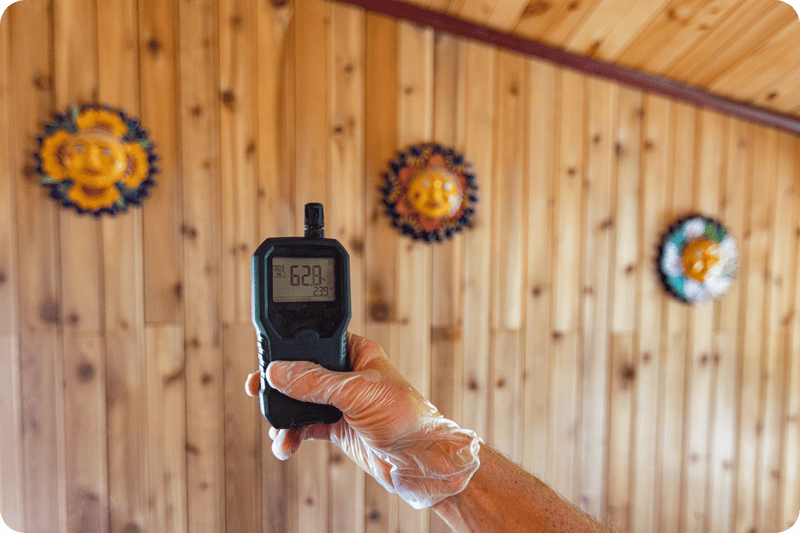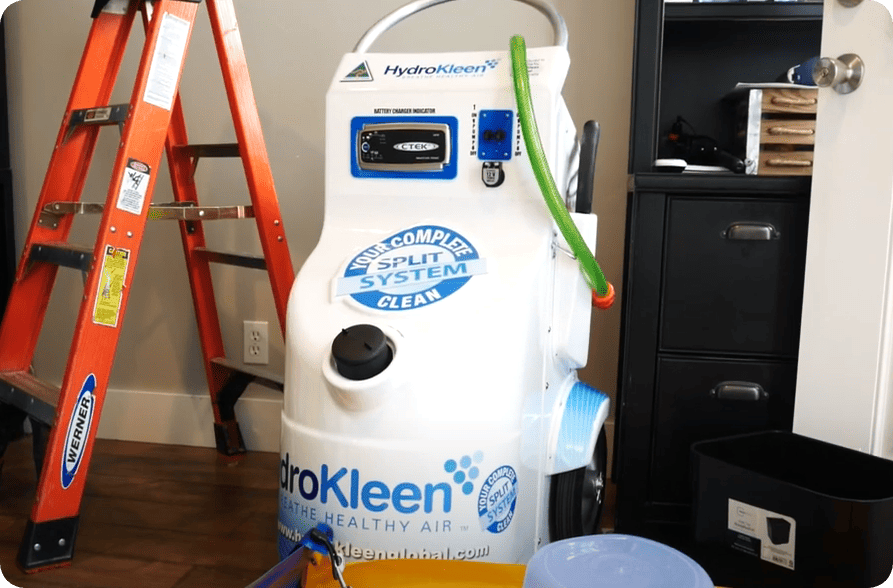A Guide To Common Invisible Toxins In The Air In Your Home
Indoor Air Toxins And Their Symptoms: Boise Metro, Valley County Homes
 By now, everyone is very aware that what’s floating around in the air around you can be hazardous to your health. Lately, most of that focus has been around viruses. But the truth is that’s just the tip of the iceberg.
By now, everyone is very aware that what’s floating around in the air around you can be hazardous to your health. Lately, most of that focus has been around viruses. But the truth is that’s just the tip of the iceberg.
Especially in your home.
You may be surprised to learn that the air in your home is often dirtier than the air outside. It’s because there’s not nearly as much circulation to clean out the many invisible, airborne toxins that make their way inside,
Outside, you’ve got winds and miles and miles of open space. That dilutes the pollutants around. Inside, however, they build up. And, in the summer and winter especially, they can reach dangerous levels when your windows stay closed all the time.
This can be a problem for anyone. These invisible contaminants can cause anything from a general sick feeling to toxic mold syndrome.
On top of that, seasonal allergy sufferers experience more flare-ups. And, people with asthma have more attacks.
Related: Excellent Indoor Air Quality Is Essential For People With Asthma
But, what exactly is floating around in your home? And what can you do about it?
That’s our topic for this article. We’re taking a close look at the specific airborne contaminants people often find in their homes — whether they know it or not.
If you use a heat pump and air handlers to heat and cool your home, you need to know what’s lurking inside those, how your system circulates that stuff through the air, and what you need to do to get rid of it.
Related: What You Need To Know About Microbial Contamination In Mini Splits
If you have any questions along the way, especially about the mini split in your Treasure Valley home or business, call us today at (208) 779-5596. We’ll answer any questions you have and set you up for an appointment if you’re ready.
Common Toxins In The Air In Homes And Businesses In Idaho
Here’s a quick list of common toxins in your home. For the most part, you can’t see them, but they cause problems all the same.
Nitrogen Dioxide
Nitrogen dioxide (NO2) and nitrogen oxide (NOx) are in the same family of poisonous gasses. NOx is brownish and reacts in the atmosphere to cause smog. No2 is colorless and odorless.
Major Sources
Nitrogen dioxide is generated from combustion in water heaters, stoves, furnaces, boilers, fireplaces, and space heaters.
Health Effects
NO2 irritates the eyes, nose, throat, and respiratory tract. It causes asthma attacks and bronchitis and increases the risk of respiratory infection in young children.
Carbon Monoxide
 Carbon monoxide, or CO, is another odorless, colorless, and tasteless gas. It’s much more dangerous than nitrogen dioxide, however. That’s why we all have CO detectors in our homes now.
Carbon monoxide, or CO, is another odorless, colorless, and tasteless gas. It’s much more dangerous than nitrogen dioxide, however. That’s why we all have CO detectors in our homes now.
Major Sources
Your furnace creates CO as a byproduct of natural gas combustion. Most of it exits your home through the exhaust system, but there are always trace levels. And, it can build up when there’s a problem with your HVAC system.
Health Effects
Carbon monoxide prevents your body from getting enough oxygen. Initial symptoms include headaches, dizziness, nausea, and confusion. Eventually, you’ll pass out and over time will suffocate.
Formaldehyde
Formaldehyde is a colorless gas with a very strong odor. It’s common in homes but breaks down quickly in the air. There’s usually a tiny, harmless amount in the air all the time, including indoors. But, higher levels can cause health problems.
Major Sources
Manufacturers use formaldehyde in building materials, and you’ll find it in pressed wood products, hobby and craft items, and other general consumer products. It’s occasionally used as a food preservative and in soaps, shampoos, and cleaning products. And, it’s present in second-and thirdhand smoke.
Health Effects
Researchers have linked formaldehyde to some cancers of the nasal cavities. THere’s also an increased risk of leukemia. People report eye, nose, and throat irritation in less severe cases.
Volatile Organic Compounds
Volatile organic compounds, or VOCs, are a group of gasses that get released into the air from various household products. The term “volatile” refers to its higher vapor pressure, which means it evaporates quickly into the air.
Major Sources
VOCs can come from building materials such as flooring, carpet, paint, and color from air fresheners, household cleaners, perfumes, deodorants, and cosmetics.
Health Effects
Not all VOCs have adverse health effects, but many will irritate your eyes, nose, and throat when you breathe them in. Some people also reported nausea and difficulty breathing. Some VOCs can cause cancer. You can find a comprehensive list here.
Second- And Thirdhand Smoke
Second- and thirdhand smoke is residuals from tobacco smoke. Secondhand smoke is when you breathe in the smoke from someone else’s cigarette, cigars, pipe, or other tobacco product. Thirdhand smoke is the residual left on clothing and surfaces.
Major Sources
If you’re around people who smoke, you’re exposed to secondhand or thirdhand smoke. Even if you’re not there when they’re smoking, there’s still the risk of thirdhand smoke. IT’s even present in homes where prior residents smoked inside.
Health Effects
Just as for smokers themselves, people exposed to the residuals from tobacco smoke are at risk for cancer. Secondhand smoke also irritates your respiratory system. While thirdhand residual smoke isn’t as strong, it’s still a health risk. That’s especially so for young children who touch many surfaces and are more likely to put their hands in their mouths.
Dust Mites
Dust mites are tiny insect-like creatures that eat the skin flakes, which we all shed, and pet dander. You can’t see them without a microscope.
Major Sources
Dust mites live on and around dust particles in your home. They’re common on bed sheets, pillows, carpets, and upholstered furniture. They’re present in virtually every home, but you can reduce their presence with regular cleaning.
Health Effects
People with dust mite allergies will get small bumps on their skin where they come into contact with these critters. They also trigger seasonal allergy symptoms and asthma attacks.
Mold Spores
Mold is a multicellular fungus that grows in dark, damp, and warm places. It’s typically invisible, but you’ll notice a buildup of mold spores on surfaces if it’s left to grow over time. Some are harmless, while other types of mold are very toxic.
Major Sources
Mold spores are just about everywhere, but they become a problem when they start cultivating. They grow very quickly once they’re exposed to moisture in the air. That makes any place in your home with the right conditions a potential breeding ground for the spores.
Health Effects
Depending on the type of mold present, you can experience anything from nausea, headaches, or dizziness to red, irritated eyes, coughing, and shortness of breath. More severe symptoms include fever and fatigue. Long-term exposure can cause organ damage, Legionnaire’s disease, and more.
Related: What Is The Best Temperature To Prevent Mold From Growing In My Home?
Pet Dander
Dogs and cats shed dander just as humans shed skin flakes.
Major Sources
Furry pets shed dander naturally. So, if you have a dog or cat in the house, you’ve got pet dander.
Health Effects
The primary health effects are respiratory flare-ups. Some people are allergic to pet dander directly. And the dander also attracts dust mites, which can cause other problems and allergic reactions.
Indoor Air Quality And Mini Split Systems
 Fortunately, you can reduce the health risks from these airborne toxins with regular cleaning schedules. Just washing linens and fabrics regularly and using a damp cloth to wipe away dust goes a long way.
Fortunately, you can reduce the health risks from these airborne toxins with regular cleaning schedules. Just washing linens and fabrics regularly and using a damp cloth to wipe away dust goes a long way.
But, you can’t always get to every spot in your home where these toxins reside. In particular, it’s a big problem for people who use mini splits to warm and cool their homes.
Problems
When your mini split’s air handlers draw in the air from a room, they also bring in all these toxins. Once inside, they build upon the coil, behind the barrel fans, and on other components. It’s dark and warm there. And, there’s moisture due to the dehumidification process.
Even if you clean the filter regularly, you can’t access where these toxins collect and cultivate. And, those invisible pollutants don’t stay put. Instead, they spread back into the room as your system circulates the air.
Cleaning
HydroKleen208 offers the world’s best-recognized mini split deep cleaning. Our process is specially designed to eradicate all the contaminants inside a mini split. We use a combination of specialized tools to reach every nook and cranny. And, our cleaning agent is strong enough to eradicate microscopic toxins without using any other harmful chemicals.
Related: HydroKleen’s Process And Cleaning Agents Are Non-Toxic And Environmentally-Safe
Even if you have your system inspected regularly, you’re not getting a deep cleaning. THat’s because even the best HVAC contractor would have to take apart the units and clean each component manually. It would take hours, cost a fortune, and you’d risk something breaking in the process.
Instead, our cleanings are fast and easy. And, we leave your home looking just as clean as when we arrived. And, that’s a guarantee: If you’re not happy with the cleaning, it’s free. And, we pay for a competitor to do the job next.
Related: Five Reasons You’ll Love HydroKleen
Mini Split Cleaning In Boise, ID
HydroKleen208 guarantees the best, most effective mini split cleaning in Boise, ID and across the Treasure Valley. We eradicate the toxins and microorganisms that build up inside your air handler and make you feel sick at home. Click below or call us today at (208) 779-5596.

 You’ll find plenty of HVAC contractors who offer routine maintenance that includes cleaning. But, they can’t do as good of a job as we can. Nor can they do it as quickly or for the prices we offer.
You’ll find plenty of HVAC contractors who offer routine maintenance that includes cleaning. But, they can’t do as good of a job as we can. Nor can they do it as quickly or for the prices we offer.  Your experience with our team is just as critical to us as the job they do! That’s why the HydroKleen experience starts even before we set the appointment.
Your experience with our team is just as critical to us as the job they do! That’s why the HydroKleen experience starts even before we set the appointment.